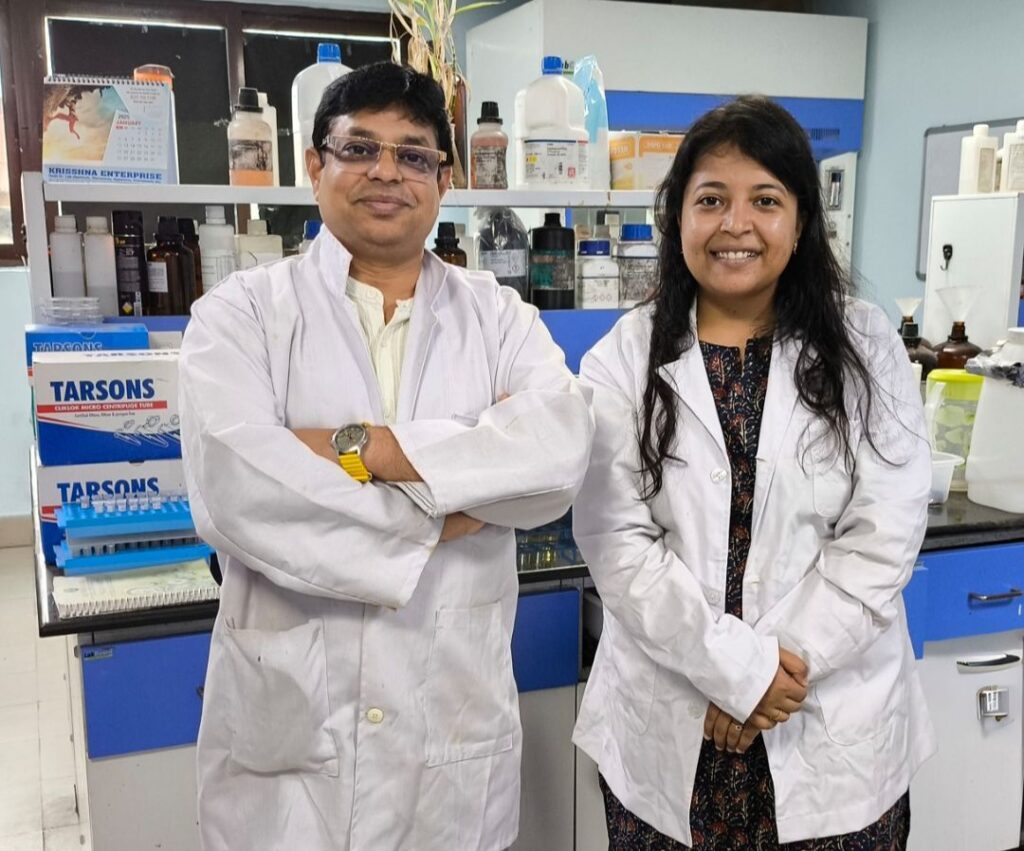GUWAHATI |September 1, 2025|SKY LINK TIMES
Researchers at the Indian Institute of Technology (IIT) Guwahati have created a groundbreaking nanosensor that can instantly detect Mercury and tetracycline antibiotic contamination in water. The low-cost sensor, made from milk protein and thymine, uses carbon dots that glow under ultraviolet (UV) light and dims when harmful pollutants are present.

The project was led by Prof. Lal Mohan Kundu, Department of Chemistry, along with research scholars Ms. Pallabi Paul and Ms. Anushka Chakraborty.
Why This Matters
Water pollution caused by industrial discharge, urbanization, and pharmaceutical misuse is a growing threat to ecosystems and public health.
Tetracyclines, widely used antibiotics for treating infections like pneumonia, often seep into water systems when not disposed of properly. This can accelerate antibiotic resistance and pose health risks.
Mercury, especially in organic form, is a carcinogen linked to neurological disorders, cardiovascular diseases, and other severe conditions.
Detecting such pollutants quickly and accurately is essential to ensure safe drinking water and environmental protection.
Also Read: https://skylinktimes.in/rare-mycetia-malayana-spotted-in-tripura/
How the Sensor Works
The IIT Guwahati nanosensor is made of extremely small carbon dots—a few billionths of a meter in size—derived from milk protein and thymine (a DNA nucleobase). These dots naturally fluoresce under UV light.
When exposed to Mercury or tetracyclines, the glow dims visibly within 10 seconds, signaling contamination.
The sensor is highly sensitive, detecting Mercury at just 5.3 nanomolar (1.7 parts per billion), which is below the safety limit set by the U.S. Environmental Protection Agency (EPA).
For tetracycline antibiotics, it can detect contamination at 10–13 nanomolar levels.
Speaking on the innovation, Prof. Kundu said:
“Mercury is highly carcinogenic, and excess antibiotics pose serious health consequences. Our sensor can detect both pollutants at extremely low concentrations, and it may also have potential applications in biological systems.”
Tested Beyond Lab Conditions
The research team tested the nanosensor not just in tap and river water, but also in milk, urine, and serum samples, proving its versatile application. To make it more practical, the sensor has been coated onto simple paper strips, enabling on-the-spot testing using a handheld UV lamp.
The findings have been published in the international journal Microchimica Acta.
Potential for Future Use
The nanosensor is at a laboratory stage, but it offers a low-cost, biocompatible, and highly accurate alternative to conventional water testing methods. With further development, it could play a major role in environmental monitoring and even biomedical diagnostics.
For More Info Stay Tuned: https://skylinktimes.in



